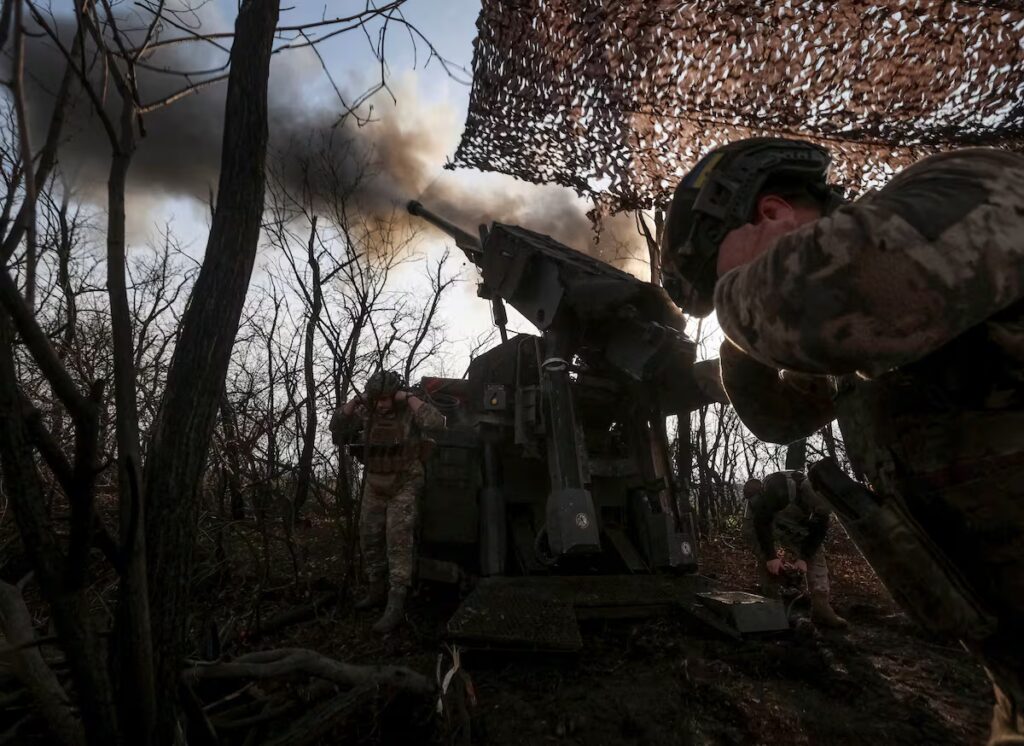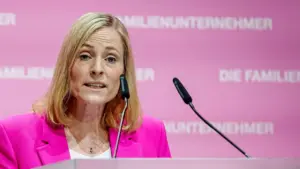
The United States and Ukraine are moving towards an agreement in principle on the peace plan that aims to end the imperialist war launched by Russia in February 2022. Washington and Kiev spoke of great progress after an intense and hasty high-level meeting on Sunday in Geneva (Switzerland), in which the Ukrainian delegation was supported by European representatives. “As a result of the talks, the parties have developed an updated and refined peace framework,” read a joint statement from Washington and Kiev released in the early hours of the morning, stressing that “any future agreement must fully respect Ukraine’s sovereignty.” However, there are big doubts about how this new framework, which is based on the 28-point Russian-American peace plan, which included important red lines for Ukraine, such as the cession of territories, a veto on joining NATO and a significant reduction of its army, will be maintained.
European leaders will hold an extraordinary meeting on Monday morning, which coincides with the EU-African Union summit, to which the leaders who did not participate in Luanda (Angola) will connect via video conference, reported the spokesperson of the President of the European Council, António Costa.
I spoke with @ZelenskyyUa this morning. I welcome the progress made in yesterday’s meetings between the United States and Ukraine in Geneva.
The negotiations represented a step forward, but important issues still remain to be resolved.
Any decision that falls within the mandate of the EU or NATO…
—Alexander Stubb (@alexstubb) November 24, 2025
Finnish President Alexander Stubb spoke with his Ukrainian counterpart, Volodymyr Zelensky, and although he also spoke of “progress” in the negotiations, he warned that there were still important outstanding issues. “The negotiations represented progress, but there are still important issues to be resolved. Any decision that falls within the competence of the EU or NATO will be discussed and decided by EU and NATO members in a separate channel,” the Finnish leader, one of the Europeans who has the best relationship with US President Donald Trump, said on social media.
US Secretary of State Marco Rubio, who led the White House team in Geneva, spoke of “tremendous progress”. The same tone was expressed by Zelenskiy’s chief of staff, Andrii Yermak, who led the Ukrainian delegation to the Swiss city.
Zelensky noted this Monday that Ukraine and the United States will continue to work on a plan with proposals to “strengthen and not weaken Ukraine.” In a video during a meeting of the Crimean Platform, held in Sweden, the Ukrainian president stressed that Russia must pay for the war and that the decision on the use of Russian sovereign assets, frozen by sanctions on European territory, is “crucial”.
Neither Ukraine nor the United States revealed the contents of the new framework agreement, which amended the 28-point plan outlined by Moscow and Washington that Kiev must cede territory to the Kremlin, limit its military and give up its NATO membership ambitions. However, the basis, the foundation of this principle of agreement, remains that road map drawn up without the participation of Ukraine and Europe, which Kiev and the Europeans have tried to modify as much as possible to limit the extent of the damage.
The Ukrainian and European idea, according to sources close to the negotiations, is to protect Ukraine with solid security guarantees that would allow it to be defended in the event of a new aggression (something that would work as a deterrent for the Kremlin), in addition to the promise that Kiev will not be forced to limit the weight of its army and its weapons so much, as the 28-point plan underlines. On the table is the idea of a peacetime force of 800,000 soldiers, instead of the 600,000 indicated in the Russian-American road map. An attempt is also made to clarify and limit as much as possible the clauses according to which the invaded country would be forced to renounce the territory.
A working paper reported on Sunday by Reuters proposed, among other things, that the security guarantee offered by the United States should be similar to that of NATO’s Article 5 (which provides for mutual defense of partners in the event of attack); that Ukraine holds elections as soon as possible after the pact – instead of the fixed deadline of 100 days as envisaged in the Russian-American plan; that Ukraine’s integration into NATO depends on the consensus of all members and that this does not exist – instead of an obligation for Kiev to include the renunciation of membership in the Ukrainian constitution; that NATO agrees not to deploy troops to Ukraine in peacetime, rather than simply.
The Europeans, who have been debating for weeks on the European Commission’s proposal to hand over to Kiev 180 billion in Russian sovereign assets immobilized in EU territory (especially in Belgium) due to sanctions, also ask that these funds be handed over to Kiev as compensation and used for reconstruction. Meanwhile, the Russian-American plan envisages that about 100 billion of Russian assets will be invested in reconstruction and investments in Ukraine, but in a format led by the United States, which would receive 50% of the benefits. Europe would also add, according to this plan drawn up without the Europeans, another 100 billion for reconstruction.
Trump had set Thursday (the day Thanksgiving is celebrated in the United States) as the deadline for Kiev to accept the plan. However, despite this very peremptory timetable, the US Secretary of State, Marco Rubio, was willing for Washington to open its hand on the deadline. Rubio assured that he felt “very optimistic” about the possibility of reaching an agreement in “very reasonable times”.





